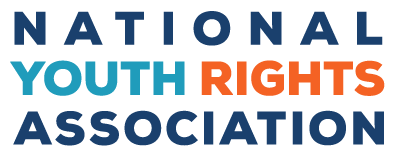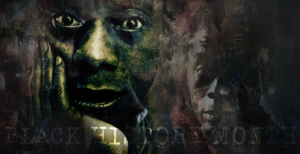A Key to Developing Positive Youth-Adult Relationships
Most of us are youth workers because we care about young people. Personally we want to both be effective and have good relationships with young people. We are satisfied when things go well. We feel bad when our relationships sour. Sometimes we scratch our heads in dismay when, despite our best efforts and concern, we find ourselves in conflict with young people we work with. We sense that some larger dynamics are at work that we can’t quiet see.
To be successful in our work with young people, we must understand a particular condition of youth: that young people are often mistreated and disrespected simply because they are young. The word adultism refers to behaviors and attitudes based on the assumption that adults are better than young people, and entitled to act upon young people without their agreement. This mistreatment is reinforced by social institutions, laws, customs, and attitudes.
If you think about it, you will realize that except for prisoners and a few other institutionalized groups, young people are more controlled than any other group in society. As children, most young people are told what to eat, what to wear, when to go to bed, when they can talk, that they will go to school, which friends are okay, and when they are to be in the house. Even as they grow older, the opinions of most young people are not valued; they are punished at the will or whim of adults; their emotions are considered “immature.” In addition, adults reserve the right to punish, threaten, hit, take away “privileges,” and ostracize young people when such actions are deemed to be instrumental in controlling or disciplining them.
If this were a description of the way a group of adults was treated, we would all agree that their oppression was almost total. However, for the most part, the adult world considers this treatment of young people as acceptable because we were treated in much the same way, and internalized the idea that “that’s the way you treat kids.” For this reason we need to hold adultism up to a strong light.
The Heart of It
The essence of adultism is disrespect of the young. Our society, for the most part, considers young people to be less important than and inferior to adults. It does not take young people seriously and does not include them as decision makers in the broader life of their communities.
Adults have enormous importance in the lives of almost every young person. This fact may make it difficult understand what I am calling adultism.
Not everything the adult world does in relation to young people is adultist. It is certainly true that children and young people need love, guidance, rules, discipline, teaching, role modeling, nurturance, protection. Childhood and adolescence are a steady series of developmental stages, each of which has a different set of needs, issues, and difficulties. For example, a three year old needs a different amount of sleep than a 15 year old; or, what works to physically restrain a seven year old will not work with an 18 year old; or, how you explain conception and birth to an inquisitive toddler will be quite different from how you explain these to a sexually active teenager.
Differing cultural, ethnic, gender, class, or religious approaches to these developmental stages can further complicate the identification of adultism. For example, what is considered “weak” in one gender, may be considered “strong” in another; or, belching may considered rude in one culture and an expression of appreciation in another; or, childhood sex play may be condoned in one culture and condemned in another.
The point is that no one act or policy or custom or belief is in itself necessarily adultist. Something can be labeled adultist if it involves a consistent pattern of disrespect and mistreatment that has any or all of the following affects on young people:
an undermining of self-confidence and self-esteem;
an increasing sense of worthlessness;
an increasing feeling of powerlessness;
a consistent experience of not being taken seriously;
a diminishing ability to function well in the world;
a growing negative self-concept;
increasing destructive acting out;
increasing self-destructive acting “in” (getting sick frequently, developing health conditions, attempting suicide, depression, etc.);
feeling unloved or unwanted.
Certainly these serious conditions do not entirely stem from adultism. Other factors like sexism, racism, poverty, physical or mental disability, and so on, may also contribute to these results. But systematic disrespect and mistreatment over years simply because of being young are major sources of trouble.
Evidence That Adultism Exists
Other “isms” like racism and sexism are well established and accepted as realities. They each have a huge body of literature and research documenting the effects and history of the oppression. There are novels, movies, media presentations, political organizations, and social movements devoted to illuminating and or eliminating the existence of the “ism”.
The concept of adultism, the systematic mistreatment and disrespect of young people, is relatively new and has not been widely accepted as a reality. There is certainly much research and literature on children and youth, but very little that concludes that young people are an oppressed group in our society, with parallels to other such groups. Part of my effort in this article is to draw forth enough examples, primarily from the United States, to point to the reality of adultism.
Common Statements
Consider how the following comments are essentially disrespectful. What are the assumptions behind each of them? Do you remember having heard any of these as a younger person?
“You’re so smart for fifteen!”
“When are you going to grow up?”
“Don’t touch that, you’ll break it!”
“As long as you are in my house, you’ll do it!
“You’re being childish.”
“You’re so stupid (or clumsy, inconsiderate, etc.)!”
“Go to your room!”
“Don’t ever yell at your mother like that!” (yelling)
“She doesn’t understand anything.” (about a baby)
“You are too old for that!” or “You’re not old enough!”
“Oh, it’s only puppy love.”
“What do you know? You haven’t experienced anything!”
“It’s just a stage. You’ll outgrow it.”
Common Occurrences
Physical and Sexual Abuse
There are numerous examples of disrespect toward young people. Of course, there is the obvious oppressive treatment: physical and sexual abuse of young people. Official reports of child abuse reached 2.7 million in 1993.
Other Punishment and Threats
There is also a whole range of nonphysical punishments or threats: being routinely criticized, yelled at, invalidated, insulted, intimidated, or made to feel guilty with the effect of undermining a child’s self-respect; being arbitrarily or unfairly “grounded” or denied “privileges.” If young people protest against their mistreatment, they are often subjected to more punishment.
Denied Control
Young people are denied control and often even influence over most of the decisions that affect their bodies, their space, and their possessions. For example, most adults seem to think they can pick up little children or kiss them or pull their cheeks or touch their hair without asking or without its being mutual. Adults can often be seen grabbing things out of children’s hands without asking.
Verbal Interactions
Most young people know that in a disagreement with an adult, their word will not be taken over the adult’s. Most adults talk down to children, as if children could not understand them. Adults often talk about a young person with the young person present as if he or she were not there. Many adults give young people orders to do things or lay down rules with no explanation. Adults, in general, do not really listen to young people, do not take the concerns of a young person as seriously as they would an adult’s, and have a hard time hearing the thinking of young people as worthy of adult respect, let alone on a par with the quality of adult thinking. Yet young people are expected to listen to adults all the time.
Community Incidents
Adolescent young people are frequently followed by security guards in stores, passed over by clerks who serve adults in line behind them, chased from parks or gathering places for no good reason by police, assumed by passing adults to “be up to no good”. The media often promote negative images and stereotypes of them, especially of urban youth and black youth.
School Examples
Schools subject students to incredible control through the use of hall passes, detention, suspension, expulsion, and other penalties. Any community certainly needs rules to live by, but the rules in most school communities are imposed on young people and enforced by the adult staff.
Consider these examples:
Teachers sometimes yell at students with impunity, but students are disciplined if they yell back at teachers.
Young people are sometimes punished unfairly because adults feel frustrated.
Students are forced to accept their “grades” that, over time, cause students to eventually internalize a life-long view of themselves as “smart” or “average” or “dumb”—with profound impact on many aspects of their lives. However, students do not get to officially “grade” teachers. If a student receives an “F”, it is assumed the student failed, not the teacher.
Young people have no real power in the important decisions that affect their lives in school.
Societal Adultism
Laws
There is a different set of laws for young people. They do not have the same rights as adults. Of course, some laws specifically protect young people from mistreatment but other laws unduly restrict the life and freedom of young people. Curfew ordinances that exist in many communities apply to young people but not to adults. In divorce cases, until a recent landmark custody case, young people were not even permitted to have a voice in deciding which parent, if either, they wished to live with.
Child Development Literature and Education
An institutional example of adultism can be found in the literature of child development, which is full of misinformation and unfounded claims about young people that severely underestimates what young people are capable of. For example, in one classic textbook used by many students of child development, The Magic Years by Selma Freiberg, the author states that the only reason an infant before six months of age cries is because of physical pain. An infant has no emotional pain before this age, she says, because “an infant’s intelligence has not yet developed the cognitive apparatus that gives rise to emotional responses.” Many parents, including myself, in observing their own infants closely, know that this is not true. Yet, young child development professionals, often without children, are taught a distorted view of infant functioning as if it were gospel.
The Effect of Cultural Practices: An Interesting Example
Generations of young people in western culture have grown up with their development limited by vast cultural biases that consistently underestimate human potential or misunderstand human development. For example, Joseph Chilton Pierce, in his Crack in the Cosmic Egg, found that in certain Ugandan cultures, infants reach the milestones of sitting, walking, and talking in half the time it takes for children in the United States. This seems to challenge accepted western norms. Researchers hypothesized two reasons for such seemingly accelerated development:
From the moment of birth until well into the toddler stage, infants spend most of their time strapped skin to skin next to their mothers. From this vantage point the infants intimately experience the rhythms of body movement and speech, the cues in the environment that their mothers paid attention to, and constant tactile closeness.
When not being carried, infants and toddlers were given loving massages for long periods every day by their mothers and other women in the community.
Researchers concluded that the combinations of these two practices stimulate complex neurological, motor, and hormonal systems of the infants to speed sitting, walking, and talking compared to what is considered “normal” in the West. The mere existence of such huge differences in the rate of development raises large questions about our assumptions about what is normal.
(The interesting back end of the Ugandan example is that at age five, after this extremely intimate early childhood experience, the children go through a rite of passage that includes being sent alone into the forest for several days, then being forced to leave their mother’s home and sent to live with another relative. This shock appears to arrest the earlier rapid development, and maturation slows way down.)
General Adult Attitudes
Many of us have heard older people say to us or other young people something like, “Growing up is giving up. You’d better get used to it.” It is the accumulation of disappointments, losses, smashed dreams, unaccepted love, and other such painful experiences that lead adults to say things like that. This crippling attitude is gradually forced upon young people. It is like a contagion, a virus about aging.
Institutional Examples
Young people in this country are forced to go to school for 12 years, whether school is an effective learning environment for them or not. They are forced by law and by parents (with the exception of those who exercise the demanding option of home schooling). If their spirit, energy, or learning style does not dovetail with the prevailing teacher, school, or educational philosophy, they begin to “fail”, have “special needs”, are “tracked”, and may eventually be labeled as a “dropout”. Throughout the 12 years, students have no voice, no power, no decision-making avenues to make significant changes. A critique of our educational system is beyond the scope of this article. Suffice it to say here that while society’s motivation of providing education for all its young people is laudable, the school system as an institution perpetuates adultism.
Another institutional example is the absence of socially responsible, productive, and connected roles for young people in most societies. Certainly in the United States, young people find few jobs, no real policy-making roles, no positions of political power, and no high expectations of young people’s contributions to society.
On the other hand, the youth market is exploited for profit as the manufacturing and entertainment industries manipulate styles, fads, popularity, and all other aspects of mass culture.
A Mirror
A handy mirror for reflecting what may be adultist behavior is to ask oneself questions like the following:
“Would I treat an adult this way?”
“Would I talk to an adult in this tone of voice?”
“Would I grab this out of an adult’s hand?”
“Would I make this decision for an adult?”
“Would I have this expectation for an adult?”
“Would I limit an adult’s behavior this way?”
“Would I listen to an adult friend’s problem in this same way?”
Sometimes the answer may be “no” for good reason, depending on the circumstance. For example, I insist that my six year old son hold my hand when crossing the street, but not my 18 year old daughter. However, many times there is no justifiable reason for treating a younger person differently except habit and attitude. If your “no” sounds a little hollow, it might be worth re-examining your reasons for doing it.
The Emotional Legacy
I hope this short list of examples begins to put our work with young people in a larger context. Most of the examples I used have been reported to me by young people. They consistently report that the main message they get from the adult world is that they are not as important as adults; they do not feel that they are taken seriously; they have little or no power.
They say that the emotional legacy of years of this kind of treatment is a heavy load, which can include any or all of the following: anger, feelings of powerless- ness, insecurity, depression, lack of self-confidence, lack of self-respect, hopelessness, feeling unloved and unwanted.
What are some possible results of such feelings on their behavior, especially as they get into adolescence and early adulthood?
Some act “out” by bullying, being prone to violence, rebelling against the “norm”, leaving home early, and so on.
Some act “in” by becoming self-destructive: suicide, alcohol and drug abuse, depression, etc.
Some gain a sense of belonging or safety by joining a gang, a clique, a club, teams
Some isolate themselves, being lonely, not asking for help, not having any close relationships, not trusting.
Again, adultism is not the only source of such behaviors, but it surely plays a major role.
A Link to Other Forms of Oppression
There is another important reason for understanding and challenging adultism. The various ways we were disrespected and mistreated have, over time, robbed us of huge amounts of our human power, access to our feelings, confidence in our thinking and ability to act, and enjoyment of living. The pain we experience as young people helps condition us, to play one of two roles as we get older: to accept further mistreatment as women, as people of color, as workers, etc., or to flip to the other side of the relationship and act in oppressive ways toward others who are in relatively less powerful positions than ours.
A simple illustration might help make this clear. Picture this: a sixth grader is humiliated by the teacher in front of the class for not doing the math problem at the board correctly. The recess bell rings. He is fuming. He feels disrespected. He goes outside and picks on someone to get his feelings out. Whom does he pick on? Someone smaller and often someone younger. And so it goes: the 6th grader picks on the 5th grader. The 5th grader turns and knocks down the 3rd grader. The 3rd grader hits the 1st grader. The 1st grader goes home and picks on his little sister. The little sister turns and kicks the cat.
We can observe among a group of children the mistreatment being passed down among them. It is being passed down the line of physical power, bigger to smaller, and often older to younger.
The significance of this early experience becomes clearer when it is generalized to other forms of the abuse of power. Men, for example, who were routinely beaten as little boys, grow up to be wife beaters. This is a clinical truism. Similarly, white people, disrespected as children, turn the same attitude, embellished with misinformation, on people of color.
This is one of the pervasive and lasting effects of the mistreatment of young people. Bullies have been bullied. Abusers have been abused. People who have been put down put others down. If a person had not been disrespected and mistreated over and over again as a child and young person, that person would not willingly accept being treated that way as he got older, nor would he willingly heap disrespect on others.
Adultism, racism, sexism, and other “isms” all reinforce each other. The particular ways young people are treated or mistreated are inseparable from their class, gender, or ethnic background. However, the phenomena of being disrespected simply because of being young holds true across diverse backgrounds.
Adultism is a pervasive and difficult form of mistreatment to identify, challenge, and eliminate precisely because every human being has experienced adultism, whatever the degree of severity or cultural variety, and because much adultism is considered natural and normal by most people.
Implications for Our Work With Young People
The set of behaviors, attitudes, policies, and practices that we have labeled adultism gets in the way of more effective youth-adult partnerships. It is useful to reflect on our interactions with young people for signs of unintended disrespect in tone, content, or unspoken assumptions. For those of us who work in youth programs, re-examine the program practices, policies, and power relationships with the lens of adultism, and make adjustments.
A few general guidelines might improve our relationships with young people:
Listen attentively to young people. Listen when they talk about their thoughts, experiences, and feelings about being young.
Ask questions. Ask what they think about everything.
Lie back. Curb the inclination to take over. Support the initiatives of young people.
Validate their thinking. Welcome their ideas.
Be willing for them to make mistakes. Putting their ideas into practice will bring mixed results. They will learn. We need to learn to support the process of their taking leadership.
Change the power relationships wherever appropriate. Consider when adults can refrain from using authority, from making the final decision, from being the “real power” behind youth leadership?
At the same time, do not thrust young people into decision-making and leadership positions without training, practice, and understanding of their responsibilities. Otherwise, we set them up for frustration, confusion, possible failure, and humiliation.
Always respect all young people, no matter what their ages, and expect them to respect each other, at all ages. This is the starting point for reversing the internalized disrespect.
Have high expectations of their potentials, and positively assess their current abilities. Never sell them short and always be prepared to lend a hand with a difficulty.
Do not take out your anger about them on them. They get this from adults all the time. It only adds more hurt. We need to take care of our upsets about them some other way.
Give young people accurate information about the way the world works, our experiences, relationships and sex, the contributions of young people to humankind, and other issues that interest them. Never lie to them.
Be patient with ourselves when we unconsciously slip into our old adultist habits. It will take time to undo them. Always appreciate how well we are doing.
Good Policy
In our efforts to create solid relationships with young people we inevitably come up against adultism: theirs, ours, or society’s. Program staff in youth programs need to avoid two extremes.
One is the permissive attitude that says, “Anything the young people want is OK.” The mistreatment of and disrespect for young people have left them, to varying degrees, with irrational feelings, misinformation, and tendencies to act out their hurts. Adult staff must not abdicate their responsibility to provide effective leadership and good policy.
The other extreme is the adult authority running the show. Adults, likewise, have their share of irrationality, which is often the legacy of the adultism visited upon them as youth. The young people need policies that protect them from adultist leadership.
A sound policy for behavior in our work together needs to include mutual expectations that apply to all people, regardless of age:
to treat each other with nothing less than complete respect;
to think independently and not just react;
to act to improve the situation;
to be trustworthy, honest, and reliable in relations with each other;
to think about the well-being of the whole group;
to care about each other;
to struggle against everything which keeps us divided among ourselves.
Envisioning a World Without Adultism: A Final Comment
It has been inspiring and sobering for me whenever I ask young people to imagine a world in which young people were completely respected and never suffered from mistreatment because they were young. Inspiring because they talk about how education would be more related to them as learners, how they would help hire teachers and develop curriculum, how they would use schools as community centers to provide services and opportunities for others, how they would treat their siblings and friends with much more care, how they would feel smart and effective, how they would feel part of their community, how they would help decide how things got done, how they would have numerous open and trusting relationships with adult family members and others, how they would feel confident and loved, how they would help end conflict between racial and cultural groups, how they would be leaders.
Sobering because present reality is so far from that. However, each of us, in our individual relationships with young people, and in our programs, can help create the conditions that help young people develop their vision, practice decision making, exercise judgment, and grow in leadership.






One Comment
Comments are closed.